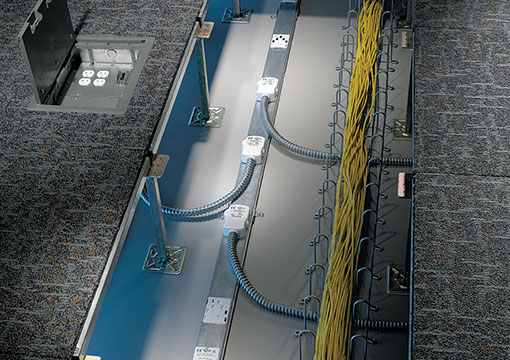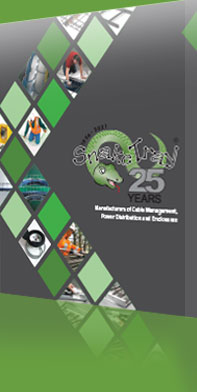What is ASHRAE Standard 90.1?
In 1975 the American Society of Heating, Refrigerating and Air-Conditioning Engineers, Inc. (ASHRAE) first published a set of standards that provided minimum requirements for the energy-efficient design of most buildings, excluding low-rise residential buildings. Initially focused on the HVAC elements of construction, it has evolved to include the majority of mechanical (escalators, elevators, pumps, etc.) and electrical/lighting systems of a structure, intelligent building management systems (BMS), and even the building envelope itself to maximize energy conservation.
ASHRAE Standard 90.1 is an indispensable reference for engineers and other professionals involved in the design of buildings and building systems. It defines, in detail, the minimum energy efficiency requirements for the design and construction of new buildings and their systems, new portions of buildings or buildings undergoing renovation, as well as criteria for determining compliance with these requirements. Today, most states have building codes that meet or exceed ASHRAE Standard 90.1, and most government buildings must conform to the standard as well. Fines and penalties can be imposed for non-compliance.
The 2019 update includes various modifications to improve consistency and standardize the language of the document. Significant changes relate to lighting, lighting controls and power consumption. For example, there are new rules that state 50% of all 120 V power receptacles in an office or computer classroom must be automatically de-energized when the building, room or cubicle is unoccupied. This is where Snake Tray’s innovative under floor power management systems can help with ASHRAE Standard 90.1 compliance.
BMS + Snake Bus = Maximum Energy Efficiency
Snake Tray’s Snake Bus under floor power distribution and management systems are among the fastest, easiest and smartest ways to leverage the intelligence incorporated into modern buildings to reduce power consumption. Today, most structures are designed with automated BMS technology woven into their infrastructure. Building Management Systems use timers and/or occupancy sensors to determine when an area or room is active and needs power. These mechanisms can open and lock doors, turn lights and cameras on and off, and control temperature as needed, for example. When linked to power distribution systems running underneath raised access floors, electricity usage can be controlled at the most granular level.
Snake Bus assists with ASHRAE Standard 90.1 compliance through the automatic disengagement of non-essential electrical loads and devices. Snake Bus uses multi-phase longitudinal bus bar technology in four-foot or eight-foot track sections that snap together with Lego™-like ease to create an IP-addressable power distribution system for spaces up to 1,000,000 square feet. Tap offs (called Snake Whips) deliver power to individual offices and cubicles by connecting to receptacles positioned every 12 inches along the track for ultimate flexibility.
One of the phases is designated as a variable power circuit and connects to the BMS so that any device plugged in to a non-essential outlet can be de-energized as needed. The value of Snake Bus lies in the daily milli-watt savings multiplied over the thousands of devices plugged into a power distribution system in a large corporate or industrial environment.
Snake Tray offers two types of bus bar power distribution systems to meet or exceed ASHRAE Standard 90.1, depending upon building size and power requirements.
For larger structures, the three-phase 707 Series Snake Bus provides up to 18,000 watts of power (6,000 W per circuit). With this solution, one or two phases can be de-energized, resulting in either under (33%) or over (66%) compliance (as per ASHRAE Standard 90.1 minimum of 50%).
The two-phase 717 Series Snake Bus provides two circuits for up to 12,000 watts of power. Tying one phase of the 717 Series Snake Bus to the BMS satisfies the 50% de-energizing ratio for ASHRAE Standard 90.1 compliance. In addition, with the growing use of low voltage LED lighting and data lines in today’s buildings, overall energy requirements are significantly reduced. This allows builders to increase savings by installing the more affordable, lower capacity 717 Series Snake Bus for low density power environments while retaining the ability to de-energize exactly half the circuits.
The 707 and 717 Series Snake Bus communicate bi-directionally with a BMS to ensure devices like fans, heaters, calculators, radios and phone chargers plugged into receptacles designated non-essential are automatically turned off at the direction of the BMS (either through occupancy sensors or a fixed timed schedule) while leaving essential equipment powered on. For even greater flexibility, Snake Bus systems now have the digital intelligence built-in to autonomously de-energize non-essential circuits at pre-determined set points independent of the BMS, or in buildings that do not have a BMS.
Further, Snake Bus systems offer a choice of two methods to control power distribution: at the point of need/use, or at the source of energy. For the former, Snake Bus can cut power to non-essential outlets at individual workstations. Power is restored when the timed schedule dictates or when the BMS detects an employee has returned to the space. For the latter, managing power at the wiring closet de-energizes all non-essential equipment in larger sections of a building such as an entire row of cubicles, a department, or even a whole floor after business hours for maximum energy savings.
Let us help you achieve the greatest possible energy savings on your next construction project while surpassing the conservation benchmarks of ASHRAE Standard 90.1 with Snake Bus power management solutions.

